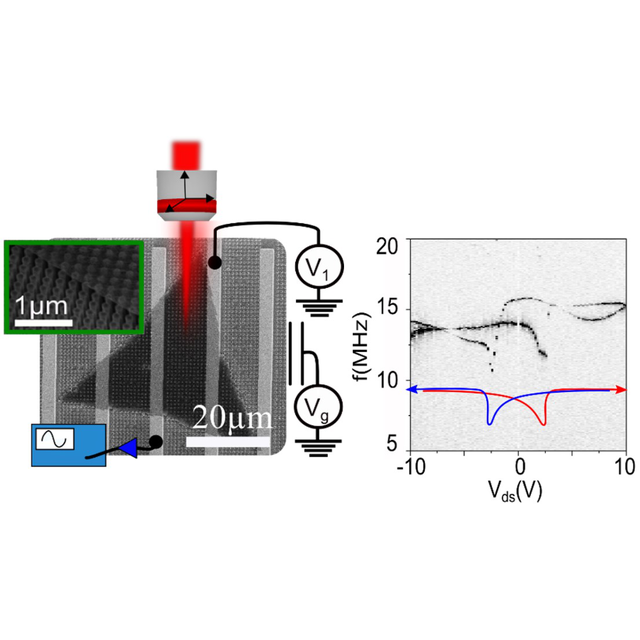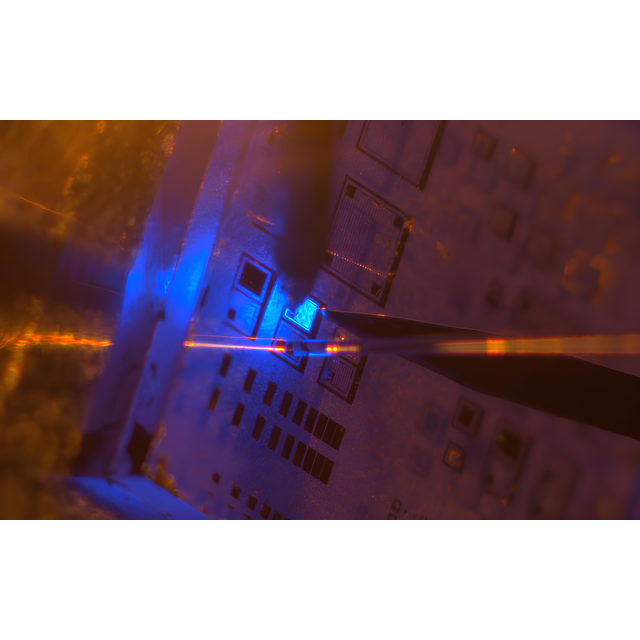In recent years, new 2D semiconductor materials have shown exotic and exciting electronic or optoelectronic properties with multiple applications. In particular, several interesting mechanisms can hybridize in the same device. We have develop a new probe of these 2D materials through mechanical vibrations with an optoelectromechanical platform. It will have the advantage of being extremely sensitive compared to any other existing solutions, intrinsic, local, and compatible with in-situ measurements of electronics and optoelectronics. In our case, we have used this probe to identify the origin of electronic memristive effects in a suspended MoS2 monolayer. We have demonstrated mechanically that this effect is linked to a local phase transition, for less than 1% of the material area. Also, the experiments and the numerical simulation demonstrate that this transition between the hexagonal (2H) and disordered octahedral (1T’) phases of MoS2 is associated with the presence and diffusion of sulfur vacancies in our samples. In fact, this method is almost universal because it is applicable to many phenomena of condensed matter.
Références :
Julien Chaste 1*, Imen Hnid 1, Chen Si2, Lama Khalil1, Alan Durnez1, Xavier Lafosse1, Meng-Qiang Zhao3, A.T. Charlie Johnson3, Shengbai Zhang4, Junhyeok Bang5**, Abdelkarim Ouerghi 1
1 Université Paris-Saclay, CNRS, Centre de Nanosciences et de Nanotechnologies, 91120,Palaiseau, France.
2 School of Materials Science and Engineering, Beihang University, Beijing 100191, China
3 Department of Physics and Astronomy, University of Pennsylvania, 209S 33rd Street, Philadelphia, Pennsylvania 19104 6396, United States
4 Department of Physics, Applied Physics, & Astronomy, Rensselaer Polytechnic Institute, Troy, New York 12180, USA
5 Department of Physics, Chungbuk National University, Cheongju 28644, Republic of Korea
ACS nano.2020
DOI https://doi.org/10.1021/acsnano.0c05721
* contact C2N : Julien Chaste









